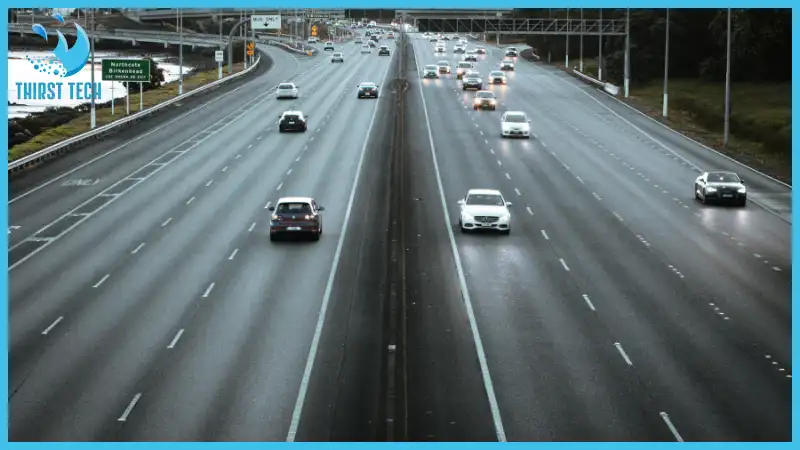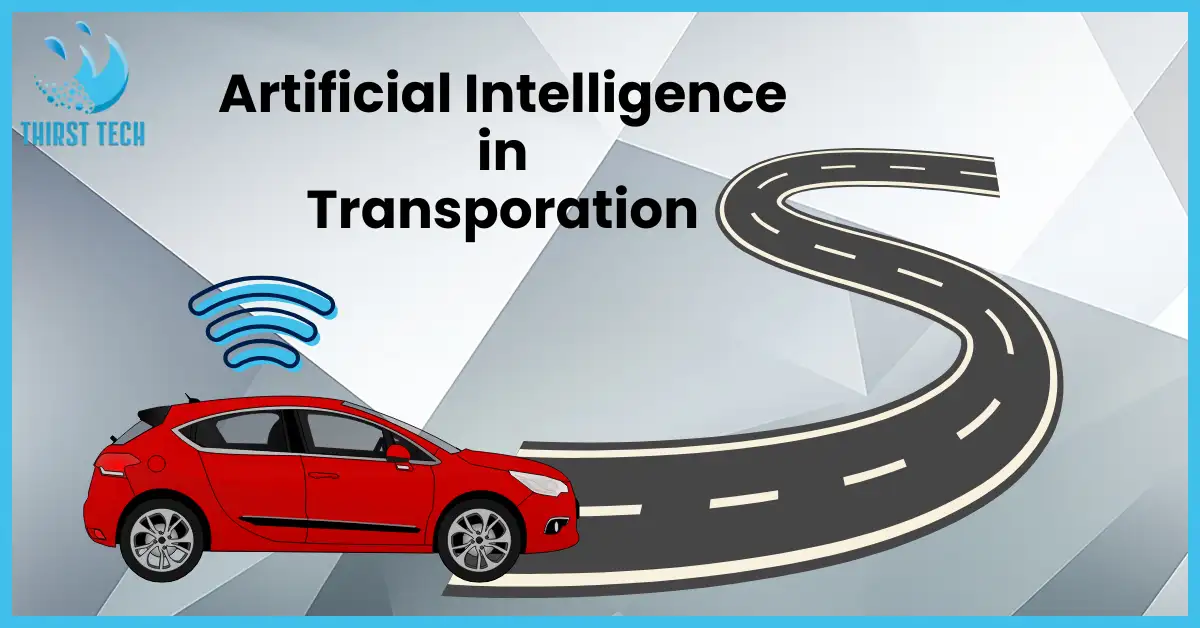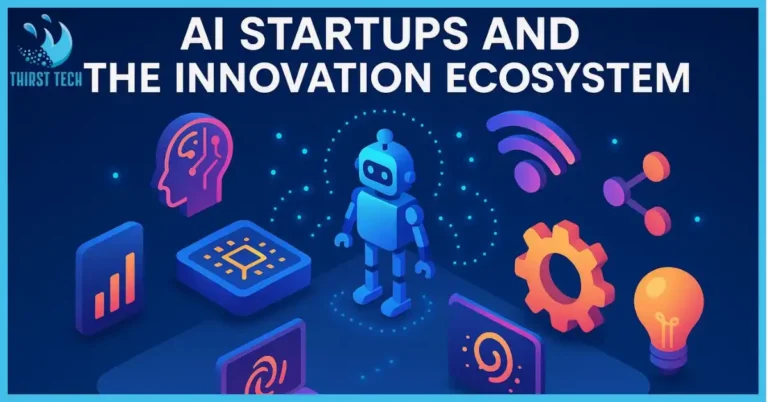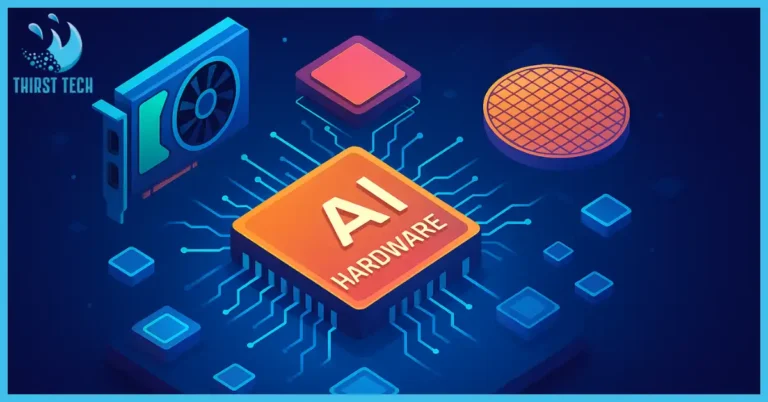AI in Transportation and Logistics: Smart Shift
Artificial intelligence is changing the way in which industries operate, and nowhere is the impact of ai more pronounced than in transportation and logistics. As innovations guide smarter modes of transport, optimize supply chains, and transform management systems themselves, AI in transportation and logistics becomes more than a trend; it is a transformational two-step.
But the very concept of an AI in logistics is steering the Transit and Warehousing industry into a future packed with greater efficiency, safety, and smarter operations.
Introduction
Transit and logistics have emerged as essential elements of global trade in the constantly evolving environment of today’s commercial landscape. Transportation systems around the world have changed, in just a few short years, using Artificial Intelligence, everywhere from running complex supply chain practices to actively directing fleets where to go.
This article, titled AI in Transportation and Logistics: Smart Shift, delves into the evolution, applications, and future potential of Artificial Intelligence in transit and logistics, providing industry insights and practical guidance for businesses eager to embrace this transformative technology.
By exploring key trends and innovative use cases, we aim to demonstrate how AI-powered solutions are not only streamlining logistics operations but are also paving the way for safer and more efficient mobility systems.
So as we take a walkthrough historical milestones, real world examples and future projections, we ensure that the focus remains on how AI is continuing to bring improvement in every edge of the industry.
🔗 Related Post
Explore how AI is Transforming Mental Health Care through early diagnosis, personalized treatments, and predictive analytics using machine learning and NLP.
AI in Transportation and Logistics: A Rocket Evolution
Historical Perspective
When Artificial Intelligence started making its way in mobility and logistics, there were only very simple automation tools to help with basic scheduling and tracking tasks. With the evolution of data analytics and machine learning, Artificial Intelligence has also expanded its horizons and now encompasses a much broader scope. Inspired algorithms were developed in early implementations that allowed large datasets to be processed and further improved decision-making within transportation management systems.
Technological Milestones
Major milestones are the advent of generative AI, which is now fundamental to demand forecasting and route optimization. The latest sensor technology and cloud computing breakthroughs have also allowed logistics firms to assimilate real-time data into their workflows, making fleet management and inventory control much more efficient.
Transition to Modern Systems
Today, Artificial Intelligence has evolved beyond its original support tool role; it is the primary enabler for the automation of supply chain processes. Organizations worldwide are harnessing cutting-edge Machine Intelligence models to study traffic behavior, optimize transportation routes, and anticipate possible interruptions to logistics operations.
This shift also aligns with the increased significance of Machine Intelligence in Transit and Warehousing, as it drives the evolution of old legacy systems into agile, data-driven networks.
🔗 Related Post
Discover What Generative AI still cannot do?, from lacking true creativity to missing human empathy in decision-making.

Top Applications and Use Cases of AI in Transportation and Logistics
Core Use Cases
The integration of Machine Intelligence in logistics into Mobility and Inventory Control has enabled companies to streamline operations and reduce costs significantly. Here are some of the core applications:
- Roaming Planning & Optimization:
Machine Intelligence algorithms process large datasets such as real-time traffic and weather information to recommend the optimal routes for freight and delivery vehicles. - Demand Forecasting:
An AI-assisted predictive analytics capability can help forecast demand more accurately over time, improving the management of stock and inventory, and mitigating the cost of stockouts or overstocking. - Inventory Management:
Machine Intelligence tools that continuously track supply chain activities in real time are used to optimize warehouse operations and balance the amount of inventory that logistics companies maintain, demonstrating one of the advantages of Intelligent Automation.
AI Transportation Systems
Automated Reasoning in Freight SystemsAutomated Reasoning is the process of monitoring and controlling circuit transportation. By collecting data from multiple sources and applying machine learning, the platform leverages high-tech sensors to provide real-time information on fleet performance and predictive maintenance. This reduces downtime and improves fleet efficiency overall.
Autonomous Vehicles & Safety
Autonomous vehicles are a landmark development in the application of AI to transportation. Autonomous vehicles, one of the main applications of AI in different means of transportation, have been developed to promote road safety and minimize human error. The self-driving cars that will compete in this environment will use Automated Reasoning to analyze the driving environment, and are outfitted with technology driven by machine learning that is state-of-the-art.
Fleet Management & Smart Mobility
AI-powered smart mobility solutions transform fleet management. Through enhanced route planning and real-time monitoring, logistics companies can reduce transportation costs and improve service delivery.
🔗 Related Post
Learn how AI Agents function in 2025, from decision-making models to automation, revolutionizing industries with smart adaptability.
Advantages of AI in Transportation and Logistics
Efficiency and Cost Reduction
Gradual Operational efficiency is one of the major advantages of implementing AI in transportation and logistics. Smart Technology reduces transit costs and technology reduces routine tasks, and provides data-driven insights to streamline supply chain management. Predictive maintenance is a prime example: It decreases the risk of unexpected failures that increase repair costs and hurt productivity.
Enhanced Decision-Making
Logistics can benefit from Smart Technology because it provides analytical tools that support improved decision-making. AI can support logistics executives with vital insights that allow them to make faster decisions, from demand forecasting to real-time monitoring. Thereby, even a slight delay could mean the difference between losing and winning a potential customer.
Industry Transformation
The impact of Artificial Intelligence in logistics is transformative across all areas of the industry. When organizations tap into their architectures with advanced AI models, they make a structural shift from solving reactive problems to proactive strategy-making. It manifests itself in more efficient supply chain operations, lower logistics costs, and better transportation management in general.
Troubles and Issues in the Implementation
Integration Issues
While the potential benefits are exciting, implementing AI into current transportation systems poses its own set of challenges. While legacy systems are efficient, most logistics companies have lagged behind with legacy systems, for which they were retrofitted, since legacy systems were not originally designed for Artificial Intelligence technologies. These systems can be difficult to integrate with AI, and cost money both to implement and train.
Safety and Regulatory Concerns
Safety always looms large as AI progresses, especially in terms of self-driving cars. The exact standards and protocols needed to make sure that self-driving cars and other AI-driven solutions are safe to be released on public roads are still being worked out by regulatory bodies. Solving these issues is vital to the general acceptance of AI within Mobility and Inventory Control.
Ethical and Operational Challenges
Ethical questions also arise, particularly about data privacy and algorithmic bias. That is why logistics companies, too, must also steer clear of the potential perils presented by AI that would threaten operational integrity and customer trust in order for the Automated Reasoning systems deployed to be developed ethically, transparently, and fair.
🔗 Related Post
Explore Algorithmic Bias in AI – its causes, real-world effects, and solutions for building fairer AI systems.

The Future Impact of Emerging Technologies
Emerging Technologies
These are just a few of the ways that Cognitive Computing is already being used in transit and logistics, with much more to come in the future as this technology continues to develop. New technologies, including generative AI and advanced sensor methods, will enable real-time, applied data processing, allowing for greater mileage and better inventory control.
Scalability and Impact
With AI adoption at its peak, its scalability will greatly affect the market. Production and transportation volumes will grow in the future as supply chain operations become more efficient, and the logistics management systems become more intelligent. This scalability is going to be increasingly vital in greening challenges like sustainable transportation and carbon footprints.
Continuous Innovation
The transit and logistics sector will strive to keep its competitive advantage for years through persistent innovation. Businesses that commit to research and the rollout of new AI technologies will be primed to dominate the market.
🔗 Related Post
Dive into How AI Models are Built and Trained, from neural networks to transformers—perfect for both beginners and seasoned developers.
Implementing AI in Logistics and Transportation
Steps to Adopt Smart Technology
For companies wanting to leverage the capabilities of AI, a methodical model is required:
- Assessment:
The transfer process of the data to the AI system that is being used. - Integration:
The investment in technology upgrades and the integration of tools with existing systems. - Training:
Make sure that employees have in-depth training on how to adopt and use the tools effectively. - Pilot Programs:
In the development phase, run pilot programs that can assess Automated Reasoning applications at the ground level before full-scale implementation. - Monitoring & Optimization:
Gather insights from the AI systems in real time to continuously monitor performance and tweak your algorithms accordingly to get the most out of your AI usage.
Best Practices
Best practices that encompass Smart Technology and operational use must be adopted as AI is integrated into transportation enterprises. Clear goals, data hygiene, and an innovative culture are some of the key practices. Adhering to best practices, logistics companies can leverage the full power of AI and experience tremendous gains in transportation management.
Management Systems and AI Tools
AI-based modern management systems can help logistics companies optimize their operations. These platforms use different Smart Technologies, from route planning algorithms that tell you the quickest way to get your goods through to inventory management systems that decide where goods should be, to give a complete view of logistics operations. They combine to streamline workflows and improve decision-making at all levels.
🔗 Related Post
Discover how AI is Transforming Cybersecurity Defenses through real-time threat detection, smart automation, and proactive risk prevention techniques.
Real-World Examples and Case Studies
Industry Leaders
Major logistics companies are investing a great deal of resources in using AI, a sector that will change the way their organizations function. As an ordinary illustration of that contemporary datatake extension in Transportation, most of the best AI transportation firms use real-time data analytics to increase a delivery’s speed, validity, and efficiency, while additionally anticipating preventative maintenance periods.
Case Studies: A Comparative Analysis
The following table provides a comparative analysis of logistics operations before and after the adoption of Smart Technology:
| Aspect | Before AI Adoption | After AI Adoption |
|---|---|---|
| Route Planning | Manual, time-consuming processes | Automated, real-time optimization with AI |
| Inventory Management | Reactive and error-prone | Proactive management using predictive analytics |
| Fleet Maintenance | Unscheduled downtime | Predictive maintenance reduces delays |
| Cost Efficiency | Higher operational costs | Significant cost reduction through optimization |
| Safety Measures | Human error-driven incidents | Enhanced safety with AI-driven monitoring |
This table highlights how AI integration not only streamlines logistics operations but also brings measurable improvements in efficiency, cost savings, and safety.
Lessons Learned
There are also some criticisms of Smart Technology in Logistics with real-world evidence. One, by embracing Artificial Intelligence early and in small ways the transition is smoother and ultimately more successful. Second, AI systems should be continuously monitored and refined to ensure they meet dynamic market conditions and get the most out of Machine Intelligence. Collaboration between tech providers and logistics firms is important.
Conclusion
Machine intelligence is reshaping shipping and distribution, too. Thomas R. McCarthy, vice president, intelligent automation, Accenture. Smart automation is already having a transformative impact.”
But by leveraging advanced technologies, like self-driving cars, predictive analytics, and real-time tracking, companies can reshape their supply chain processes and earn a competitive advantage in a fast-paced market.
FAQs
1. What’s AI long & short of use in transport & logistics?
But still, AI finds its applications in route planning, demand forecasting, inventory management, and predictive maintenance that enhance resource efficiency and reduce operational expenses.
2. Why is AI important in logistics?
There are numerous benefits of choosing an automated data architecture, such as enhancing operational productivity, conducive decision making, cost minimization, and transforming legacy systems into a modern high-velocity data architecture.
3. Are self-driving cars safe?
As self-driving cars advance, state-of-the-art AI algorithms coupled with real-time monitoring make them much safer. Concerns are to be addressed via ongoing research and regulatory actions.
4. What are the obstacles to AI adoption in transportation?
Challenges include integrating AI into legacy systems, regulatory and safety considerations, and ethical challenges such as data privacy and algorithmic bias.
5. What Son Behind the Future of AI Transportation And Logistics?
The future looks bright: advancing technologies—from generative AI to advanced sensor systems to an endless stream of innovations—are poised to transform the industry, making transportation more efficient and sustainable.
Sources









